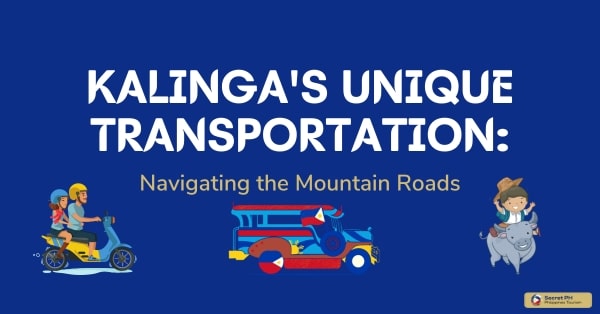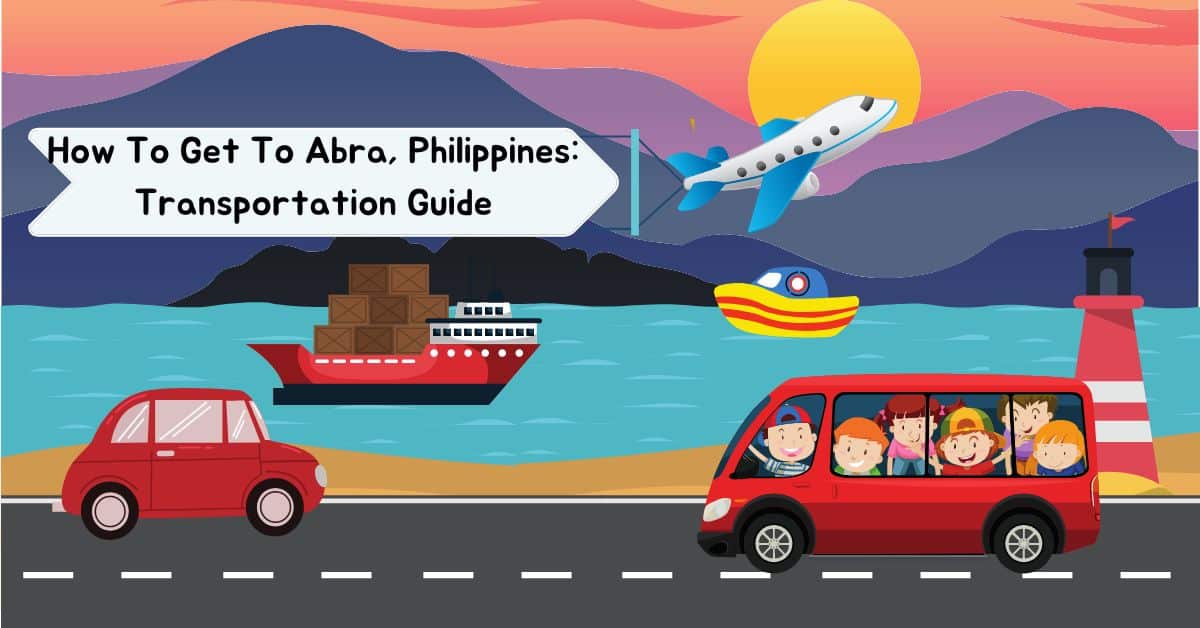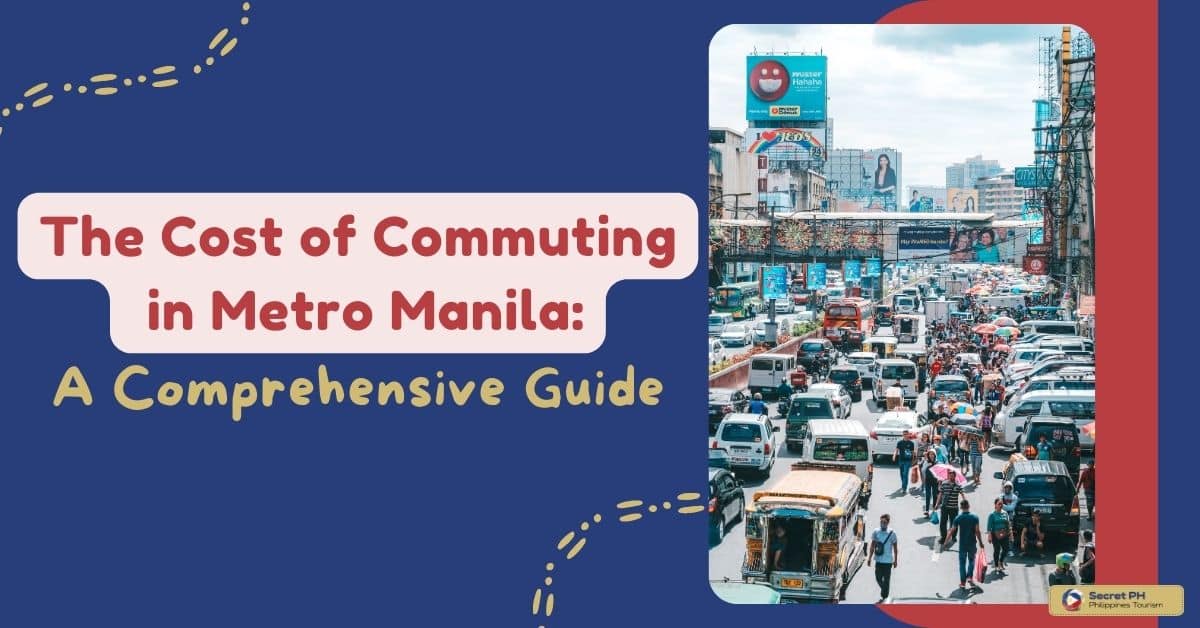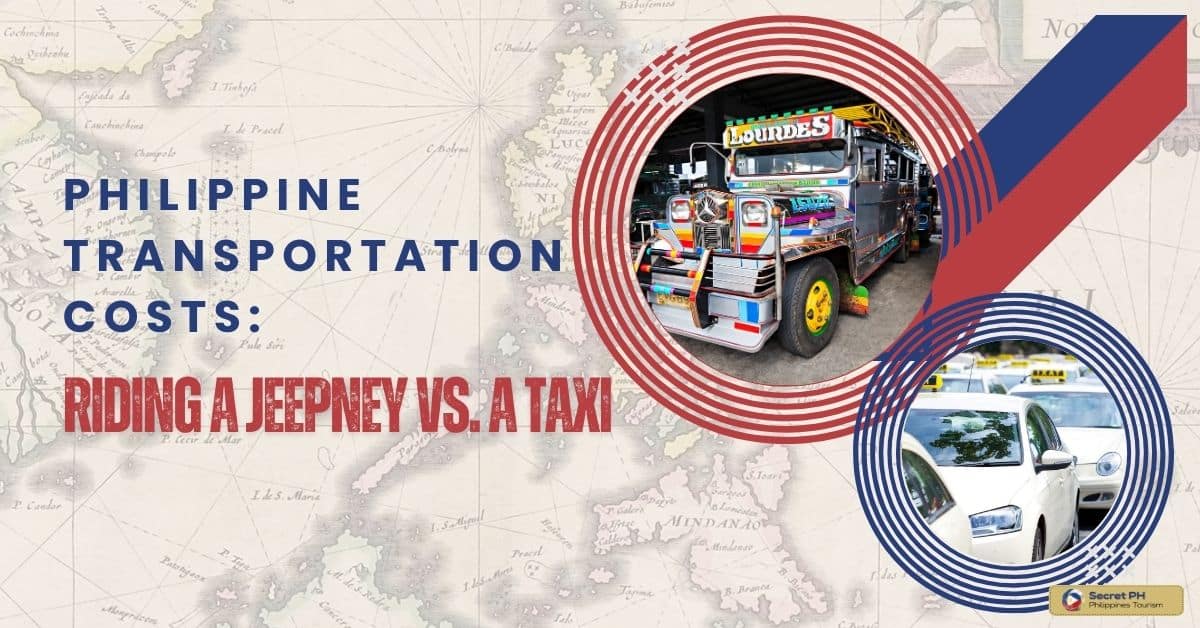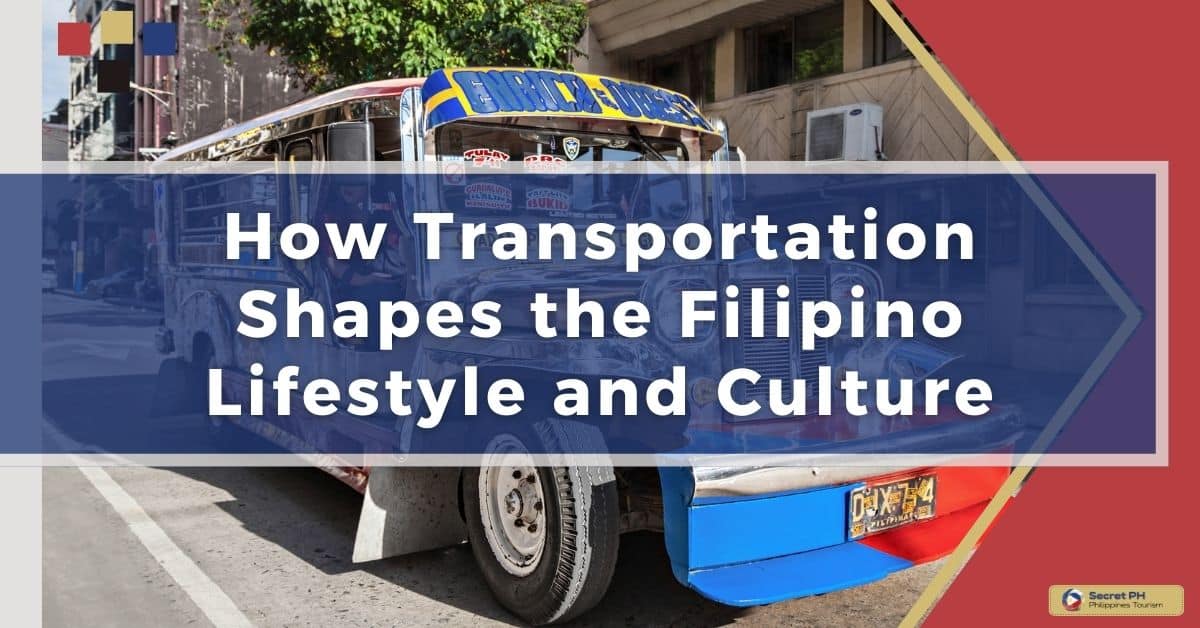If you’re looking to explore the exuberant streets of the Philippines, there are a variety of transportation options available. Best of all, these transportation methods are both safe and convenient for visitors and locals alike. Transportation options range from motorbikes to buses, allowing visitors to jump from one destination to another with ease.
This blog post will go over all the popular transportation methods found in the bustling streets of the Philippines, providing a comprehensive guide on making your way around this fascinating country with travel tips and reviews. No matter if you’re on a budget or simply want to try different modes of transport while traveling, this post will give you all the key information needed for navigating different areas without missing out on any highlights!
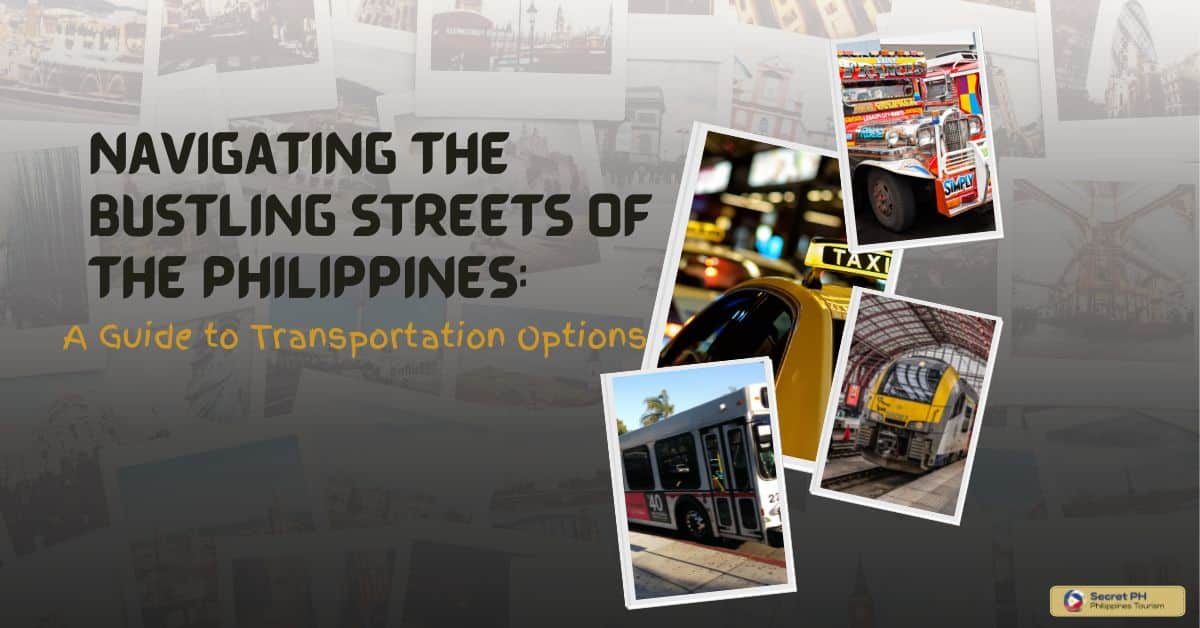
Purpose of the Guide
If you’re visiting the bustling streets of the Philippines, or if you’ve recently moved here, then you may be seeking some advice on transportation options. Worry not, because this guide is here to help! Navigating the Bustling Streets of the Philippines: A Guide to Transportation Options provides detailed information about the different forms of public and private transport available within the country, as well as safety tips for travelers.
From trains and buses to tricycles and jeepneys, this guide will help you find your way around comfortably and safely. So if you want to explore all that this wondrous country has to offer without any worries or confusion, be sure to give this guide a read!
Public Transportation
If you’re planning a trip to the beautiful country of the Philippines, you may be wondering how you’ll find your way around while sightseeing and exploring. Public transportation can be a great option if navigating the bustling streets and unfamiliar area seems overwhelming.
With this guide on transportation options in the Philippines, you will be prepared to navigate through its vibrant cities without taking any wrong turns. Here, you can learn all about public transportation and plan out your ideal route for fun and adventure!
Jeepneys
Jeepneys are an iconic part of the landscape in many parts of the Philippines. At first glance, they appear like a regular minibus but with unmistakably vibrant colors and bedazzling decorations. Jeepneys are the most popular form of public transportation for locals because they are relatively inexpensive and accessible. Each jeepney can seat up to 20 people and have become symbols of Filipino culture, often boasting unique slogans and adornments like ribbons or colorful items hung from their rearview mirrors.
These vehicles are powered by diesel or gasoline fuel and have been remodeled from US military jeeps that were left behind after World War II. Many jeepneys can be adorned with intricate details like flowers or religious symbols – making them unique to each driver and providing a captivating journey for anyone riding along inside.

How to ride a jeepney
Riding a jeepney is an experience not to be missed while in the Philippines. It’s the most popular form of public transportation, as it is relatively inexpensive and easy to navigate. If you’re interested in how to ride a jeepney, here are some helpful tips.
- Look for the jeepney route: Jeepneys usually have their route and destination painted on the side of the vehicle. Make sure you are getting on the right jeepney for your destination.
- Board the jeepney: Once you have found the correct jeepney, climb aboard through the back door.
- Pay the fare: The fare is usually collected by the conductor, who will walk through the jeepney while it is moving. Give the conductor your fare and tell him your destination.
- Take a seat: Once you have paid your fare, find a seat and make yourself comfortable. Keep in mind that jeepneys can get quite crowded, so be prepared to stand if necessary.
- Signal when you want to get off: When you are nearing your destination, let the conductor know that you want to get off. He will let you know when it is time to alight.
- Exit through the back door: Once the jeepney comes to a stop, exit through the back door and be ready to disembark.
Pros and Cons of Using Jeepneys
Public transportation systems are essential components of any thriving city, and the Jeepney is an iconic mode of transportation through the streets of many regional cities. Jeepneys are widely used as a cost effective and efficient form of transport, but they have both their advantages and disadvantages that must be taken into account when using them.
| PROS | CONS |
| Affordable | Overcrowded and uncomfortable during peak hours |
| Widely available | Not always reliable |
| Convenient for navigating through city streets | Safety concerns |
| Can be faster than other forms of public transportation | Route may not be direct, multiple stops and longer trip time |
| Cultural experience | May not have air conditioning, may be hot and stuffy during summer months. |
Buses
Buses are one of the most common types of public transportation, used by passengers to travel all over the world. Their reliability and convenience make them a great option for getting around whether you’re travelling short trips or long distances.
Bus drivers are well-versed in the local area and can quickly get you to your destination with ease. Additionally, buses usually come at an affordable price point – making them a great economical choice for public transportation.

How to Ride a Bus
- Look for the bus route: Buses usually have their route and destination displayed on the front of the vehicle. Make sure you are getting on the right bus for your destination.
- Board the bus: Once you have found the correct bus, board through the front door.
- Pay the fare: The fare is usually collected by the driver, or in some cases, by a fare collector on board. Insert the fare into the fare box or give it to the fare collector.
- Find a seat: Once you have paid your fare, find a seat and make yourself comfortable. Some buses have designated seating areas for specific groups, such as senior citizens or people with disabilities.
- Signal when you want to get off: When you are nearing your destination, pull the signal cord or press the stop request button to let the driver know you want to get off.
- Exit through the front door: Once the bus comes to a stop, exit through the front door and be ready to disembark.
Pros and Cons of Using Buses
Bus travel is often cheaper than other options, such as private hire vehicles or taxis, making it a cost-effective way to get around. On the other hand, buses may not always be available when you need them, and they can sometimes be overcrowded during peak times. When considering the pros and cons of taking a bus, it’s important to weigh up these factors before deciding.
| PROS | CONS |
| Low cost | Limited routes and schedules |
| Energy efficient | Can be subject to traffic delays |
| Reduced traffic congestion | Less comfortable than other forms of transportation |
| Can serve areas not accessible by other modes of transportation | May not be accessible to people with disabilities. |
Trains
Trains are an important part of public transportation. In many parts of the world, they provide efficient and cost-effective travel for commuters and tourists alike. Trains link communities together and allow us to traverse longer distances in a convenient way. Additionally, compared to single-occupancy vehicles, they reduce our dependence on fossil fuels and help fight against climate change.
LRT-1 (Light Rail Transit) – Stretching over 20 kilometers, the elevated LRT-1 connects two cities in the capital region, Pasay and Caloocan City. There are 113 trains currently operating, accommodating half a million passengers daily and running at a maximum speed of 60 kph.
LRT-2 (Light Rail Transit) – A 15-kilometer elevated railway system, this line connects two Metro Manila cities, Pasig and Manila, traversing key locations in the region. It serves about 200,000 passengers daily running at a maximum speed of 60 kph.
MRT-3 (Metro Rail Transit) – Stretching over 16 kilometers, this train system primarily serves the key cities of Metro Manila, as the MRT route connects the north and south of the capital region. The original ridership capacity of the train was 350,000 per day, but in 2016, it peaked to half a million, as the travel time of trains increased. A total of 21 MRT trains operate in the transport infrastructure.
PNR Commuter Line – This train system operated by the Philippine National Railways has two metro commuter lines, namely Metro North Commuter and Metro South Commuter, as well as shuttle services servicing key cities in the capital region. Metro North and Metro South meet in Tutuban station in Tondo, Manila.

How to Ride a Train
- Locate the nearest train station
- Purchase a ticket or have a valid train pass
- Locate the correct platform for your train
- Board the train and find a seat
- Keep your ticket or pass accessible for inspection
- Listen for announcements and pay attention to signage to ensure you get off at the correct stop
- Exit the train at your destination and proceed to your next destination.
Pros and Cons of Using Trains
Taking a train can be beneficial in a variety of ways, however there are several drawbacks to consider when deciding which mode of transportation to take. Weighing the pros and cons of taking a train is essential for anyone who travels frequently or would like some additional insight about this form of public transportation.
| PROS | CONS |
| Often faster than driving or taking a bus | Limited routes and schedules |
| More comfortable than buses | Can be more expensive than other forms of transportation |
| Can cover longer distances | May not serve all areas |
| Reduced traffic congestion | Can be subject to delays and cancellations |
| Can be more environmentally friendly | Not as flexible as other mode of transportation. |
| Can allow for scenic views during the journey |
Private Transportation
Private transportation is becoming increasingly popular in Philippines due to its convenience and flexibility. It offers more personalized service compared to the regular public transport, so users can choose routes and stops that match their specific needs.
Moreover, with the advances in technology, private transportation has become much more reliable and efficient than ever before. This allows travelers to reach their destination faster, while also saving time and money on the way.
Taxis
Taxis remain a popular form of private transportation for many people in the Philippines. Providing flexibility and convenience, taxis can be hailed from the street or ordered through an app-based service.
Conveniently located near airports, train stations and other transportation hubs, taxis also offer a reliable alternative to public transport when times are limited. With knowledge of the area, they can make navigating big cities simpler than trying to figure out a map or interpret unfamiliar directions.

How to Hail a Taxi
- Stand at a safe location where taxis are known to pass by or look for a taxi stand.
- Wait for a taxi with an available light on top of the car.
- Raise your hand or make eye contact with the taxi driver to signal that you would like a ride.
- Wait for the taxi to come to a complete stop.
- Open the door and get in the taxi.
- State your destination and negotiate the fare if necessary.
- Confirm if the driver will use the meter or if you have agreed on a fixed fare.
- Enjoy the ride and pay the driver at the end of the trip.
- Get out of the taxi and make sure that you have all of your belongings with you.
Pros and Cons of Using Taxis
Taxi services come with both pros and cons, ranging from timely transportation to expensive fares. Knowing the advantages and disadvantages of utilizing taxi services can help you make an informed decision on your mode of transportation.
| PROS | CONS |
| Door-to-door service | Can be more expensive than other forms of transportation |
| Flexible route options | Can be difficult to hail during peak hours |
| Available 24/7 | Quality of service may vary |
| No need to navigate public transportation | Can be unsafe if not using a reputable company. |
Grab
It’s an affordable alternative to traditional cabs, making it a great option for travelers looking to get around quickly and easily. With its easy-to-use app, users can locate drivers nearby, select how many passengers they will be with, and pay both with cash or credit cards – all from one central location.

How to Use Grab
- Download the Grab app on your smartphone
- Create an account by providing your personal information and payment method
- Select the type of service you need (i.e. GrabCar, GrabTaxi, GrabBike, etc)
- Input your pick-up and drop-off location
- Confirm the fare estimate and request for the ride
- Wait for the driver’s confirmation and track the driver’s location
- Get in the vehicle and enjoy the ride
- Pay the fare through the app or cash (depending on the service and location)
- Rate the driver and provide feedback about your experience
- Remember to check for promotions and discounts that may be available through the app.
Pros and Cons of Using Grab
One of the emerging trends in transportation is the use of ride-hailing services such as Grab. There is no doubt that this technology has made our lives easier, but it also comes with both pros and cons. On one hand, Grab allows us to quickly prepare for journeys and get to our destination with minimal effort. It is important to weigh all variables before deciding on the best form of transit for your individual needs.
| PROS | CONS |
| Convenient and easy to use app | May be unavailable in certain areas |
| Wide variety of service options | Quality of service may vary |
| Real-time tracking of driver and vehicle | Surge pricing during peak hours |
| Cashless payment options | Some safety concerns have been reported |
| Often less expensive than traditional taxi | Can be affected by traffic and weather conditions. |
Tips and Tricks
Exploring the Philippines is an incredible adventure that can take travelers to some of the most picturesque sights in the country. Navigating the bustling streets in search of the perfect destination may seem daunting at first, but understanding transportation options and tips can enable most of your trip even a first-time visitor to successfully get from place to place.
How to Avoid Getting Lost
If you’re looking for the easiest way to explore the eclectic streets of the Philippines, transportation options are available from public transport to taxis and car rental services. For those travelling on a budget, buses make up one of the economically friendly ways to get around, but with routes that range far and wide and can be difficult to navigate often resulting in getting lost.
To avoid such scenarios, research your route ahead of time or bring a map along when hopping on. If you’re a bit more adventurous or prefer your own mode of transport, car rentals exist as well from manual drive to automatic – just remember obey traffic laws and give other commuters priority!
How to Avoid Getting Scammed
Navigating the bustling streets of the Philippines can be both exciting and overwhelming. Fortunately, there are a variety of transportation options available to make it easy to explore your surroundings. Of course, as with any new environment, knowing some simple key tips and tricks can help you save money on transportation and avoid getting scammed.
For inter-city travel, buses tend to be the most economical option; however, depending on your route, you may want to consider renting a car or hailing a tricycle or jeepney ride out of town. Taking advantage of domestic flights is another great way to get around quickly and efficiently throughout the country.
How to stay safe while using transportation
Navigating through the bustling streets of the Philippines can be an overwhelming experience. Visiting the country for leisure or business needs to include a knowledge of transport options, especially when it comes to safety. This guide will help you better understand how to stay safe while using transportation options such as jeepneys, tricycles, and buses. By following a few tips and tricks, you will be able to safely navigate your way around the country and make your trip more enjoyable.
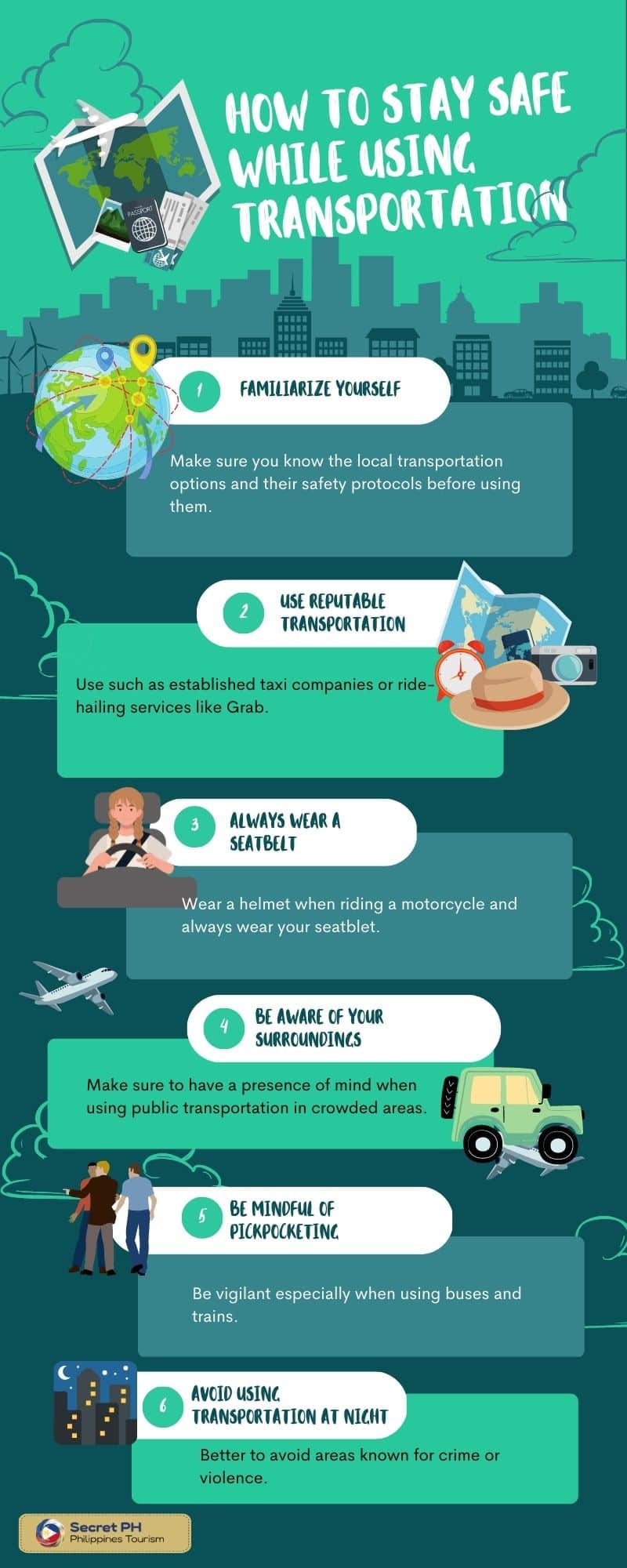
- Familiarize yourself with the local transportation options and their safety protocols before using them.
- Use reputable transportation providers, such as established taxi companies or ride-hailing services like Grab.
- Always wear a seatbelt when riding in a car or taxi and wear a helmet when riding a motorcycle.
- Be aware of your surroundings, especially when using public transportation in crowded areas.
- Be mindful of pickpocketing, especially when using buses and trains.
- Avoid using transportation at night or in areas known for crime or violence.
In Conclusion
This guide has given you a comprehensive overview of transportation options in the bustling streets of the Philippines, from public buses to modern jeepneys. As you navigate your way around, remember that these tips and tricks can be tailored to fit anyone’s needs. Whether you want to save money or feel like a local by taking a tricycle and bargaining with the driver, there is an option for every traveler who wants to explore what the country has to offer. So don’t hesitate – go out and enjoy the vibrant street life through the different forms of transportation!

